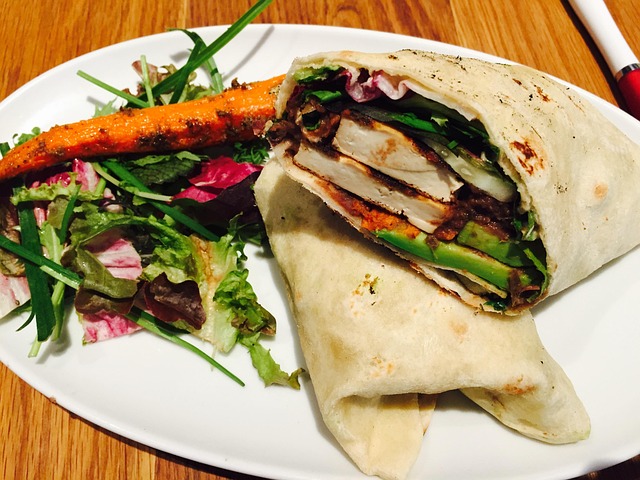Start with Your Why
Before counting a single calorie or measuring a gram of protein, you need to know what you’re trying to accomplish. Fat loss? Muscle gain? Better energy? General health maintenance? Your goal sets the tone for everything that follows. This isn’t just about food—it’s about function.
If fat loss is the aim, you’ll need to create a slight calorie deficit and prioritize protein to preserve muscle. For muscle gain, you’re eating in a surplus with a heavy focus on protein and enough carbs to fuel intense training. If energy is your focus, balanced macros and blood sugar stability matter more than precision. And if it’s simply about long-term health, the goal is sustainability: eating whole foods with an eye on fiber, micronutrients, and hydration.
But goals are only one side of the equation. The other is you. Your age, daily activity, job, training routine, sleep quality, and even medical conditions all influence your nutritional needs. Someone training for a marathon doesn’t eat like someone trying to lower blood pressure. Someone in their 20s with high metabolism has different needs than someone sedentary in their 50s. Context matters.
So before you plug numbers into a macro calculator, ask two things: What’s my real goal? And what do I bring to the table—literally and figuratively? Get clear on that, and the rest gets a lot easier.
Step 1: Calculate Your Caloric Needs
Before you start counting macros or planning meals, nail down how many calories you actually need. That’s where TDEE—Total Daily Energy Expenditure—comes in. It’s your baseline number: how many calories your body burns in a full day, including everything from workouts to washing dishes.
First, figure out your BMR (Basal Metabolic Rate). This covers what your body needs just to stay alive—think breathing and keeping your organs running. You can use formulas like Mifflin-St Jeor to estimate it, but the idea is simple: the more lean mass you have, the higher your BMR.
Then you apply an activity multiplier. Here’s the rough scale:
- Sedentary (little to no exercise): BMR x 1.2
- Light activity (1–2 workouts/week): BMR x 1.375
- Moderate activity (3–5 workouts/week): BMR x 1.55
- Very active (daily training): BMR x 1.725
- Extra active (twice-daily sessions or hard labor): BMR x 1.9
That gives you your TDEE—a solid estimate of your maintenance calories. From there, adjust based on your goal:
- For fat loss: subtract 10–20% from your TDEE
- For muscle gain: add 5–15% to your TDEE
Let’s say your TDEE is around 2,500 calories:
- For cutting: you’d eat about 2,000–2,250
- For bulking: aim for 2,625–2,875
It’s not about hitting a magic number. It’s about creating the right range to support your goal without crashing your energy or bloating your progress. Keep it simple, stay consistent, and adjust based on performance—not guesswork.
Step 2: Set Your Macronutrient Ratios
Understanding your macronutrient needs is critical for aligning your nutrition with your physical goals. Whether you’re aiming to lean down, build muscle, or sustain energy throughout the day, dialing in the right balance of protein, fats, and carbohydrates plays a key role in your overall success.
What Each Macronutrient Does for Your Body
Protein
- Supports muscle repair and growth
- Helps manage appetite by increasing satiety
- Especially important when cutting calories to preserve lean mass
Carbohydrates
- Provide your body with quick and efficient energy
- Refill muscle glycogen stores after workouts
- Help support performance and recovery, especially for active individuals
Fats
- Essential for hormone production and brain health
- Aid in the absorption of fat-soluble vitamins (A, D, E, K)
- Important for joint health and long-term energy when training intensity is lower
How to Customize Your Ratios
Your optimal macro split will vary based on your body type, training intensity, metabolism, and lifestyle. There’s no one-size-fits-all formula, but here are some starting points:
Common Macro Breakdown Examples:
- Fat Loss Focus: 40% protein / 30% carbs / 30% fats
- Lean Muscle Gain: 30% protein / 40% carbs / 30% fats
- Performance-Based Training: 25% protein / 50% carbs / 25% fats
Adjust from these templates based on how your body responds over time.
Flexible vs. Strict Macro Tracking
Finding the right method for tracking macros often comes down to personality and lifestyle. Here are two main approaches:
Flexible Tracking
- Uses estimates, general awareness, and portion control
- Ideal for those with experience or a busy lifestyle
- Encourages long-term habit building without burnout
Strict Tracking
- Involves precise logging using a food scale and tracking app
- Best for specific short-term goals like contests or weight-class sports
- Helps build discipline, but may require mental breaks to avoid fatigue
Pro Tip: Even if you start strictly, transitioning to a more flexible approach helps with sustainability for the long run.
Step 3: Choose Whole Foods That Match Your Needs
This isn’t about eating flawlessly—it’s about choosing smarter, most of the time. Start with the foundations: lean protein (like chicken breast, eggs, tofu), complex carbs (oats, brown rice, sweet potatoes), and healthy fats (avocados, olive oil, nuts). These foods don’t just help hit your macros—they keep you full, focused, and fueled.
Fiber matters more than you think. It supports digestion, blood sugar control, and satiety. Load your plate with fibrous veggies, legumes, and whole grains. And don’t forget water. Most people are half-hydrated at best, and it bleeds into everything: energy, performance, and hunger cues.
Micronutrients? Not glamorous, but crucial. Vitamins and minerals aren’t just bonus points—they run the system behind the scenes. Color up your meals with fruits and vegetables like berries, greens, bell peppers, and squash. Real food covers more bases than a multivitamin ever will.
Lastly, don’t turn portion control into a math test. You don’t need scales and spreadsheets to get this right. Use plate ratios, intuition, and honest self-checks. Eat to satisfaction, not to bloating. You’ll learn what enough looks and feels like over time.
For a deeper breakdown of the basics, check out Creating a Balanced Diet: Essential Nutrition Tips.
Step 4: Plan Your Meals Around Your Schedule
Your plan won’t work if your routine can’t support it. Start with how often you prefer to eat. Three solid meals a day keeps things simple, consistent, and is easier for most people to stick with. If you’re someone who grazes, structured snacking can work—as long as you keep portions and quality in check. Intermittent fasting? It’s less about magic, more about whether it fits your lifestyle. Any of these can work. The key is sticking to what you’ll actually do.
Now layer in your workouts. Pre-workout nutrition should set you up with fuel—think a mix of carbs and protein about an hour before training. Post-workout, your body needs to recover. Prioritize protein to repair muscle, and some carbs to replenish energy. Skip the gimmicks; real food works just fine.
Next: make the rest of your week easier. Batch cooking one or two times per week can take an enormous load off your shoulders. Build a grocery list around your staples—lean protein, veggies, carbs that fuel you—and keep your meals on repeat with minimal tweaks. Having prepped meals in the fridge isn’t just convenient; it’s a form of momentum. You’re not just eating—you’re staying on plan, even when life isn’t.
Personalized nutrition starts with good prep. It’s not glamorous, but it works.
Step 5: Monitor, Adjust, Repeat
Once your plan is in motion, the real work begins: tracking. Not obsessively, just enough to see patterns. Start with energy levels—are you slogging through workouts or feeling sharp? Body composition shifts should follow over weeks, not days. Mood and digestion are underrated signs, too. Bloating, irritability, or stalled motivation can flag something deeper than hunger.
If things stall or feel off, it’s time to adjust. That doesn’t mean flipping every number. Try small tweaks—pull back 100-200 calories, or slightly up your protein if recovery feels weak. Let the data guide you, not panic. Look at your trends every 2-3 weeks. One bad day isn’t a red flag, but two off weeks? That’s worth a look.
Most importantly: forget perfection. Bodies don’t thrive on extremes—they need consistency. A solid, flexible plan followed 85% of the time will crush a flawless plan that’s abandoned after week two. Keep showing up. That’s how it sticks.
Common Pitfalls to Avoid
Most meal plans fail before they start because they aren’t built for real life. Copy-paste diets that worked for someone on Instagram rarely translate to your actual schedule, preferences, or energy demands. If it doesn’t fit your lifestyle, it won’t last. You’re not a robot—your plan shouldn’t act like one either.
Another trap? Cutting out entire food groups with zero justification. Unless you’ve got a medical reason, skipping carbs, fats, or even dairy cold turkey usually creates more problems than it solves. Diets should add stability, not confusion or cravings.
And let’s be real about supplements: they can help, but they’re not magic dust. You can’t out-supplement poor sleep, high stress, or a junk-heavy grocery list. Pills should support good habits, not mask the lack of them.
Wrap-Up: Build the Plan that Sticks
There’s no universal blueprint for nutrition—your body, your routine, and your preferences all matter more than fitting into anyone else’s template. A personalized meal plan isn’t just smart; it’s sustainable. Tailor your system to work with your life, not against it.
Stick to the basics, but stay flexible. If a rigid plan burns you out, it’s not worth it. Flexibility keeps you sane and makes the plan something you can follow for months—not just Monday through Thursday. That matters more than hitting perfect macros every single day.
And it all comes down to consistency. Results don’t show up because you crushed it one week and disappeared the next. They show up when you show up—day after day, even when it’s not fun or flashy. Build your routine, be patient, and let your progress speak.

 Kennethony McKenna played a vital role in helping build Food Smart Base, contributing his expertise and dedication to the project’s development. His efforts supported the platform’s growth into a reliable source of food news, nutritional advice, and culinary insights, ensuring that it serves readers with both accuracy and value.
Kennethony McKenna played a vital role in helping build Food Smart Base, contributing his expertise and dedication to the project’s development. His efforts supported the platform’s growth into a reliable source of food news, nutritional advice, and culinary insights, ensuring that it serves readers with both accuracy and value.